© ROOT-NATION.com - Use of content is permitted with a backlink.
What anti-aircraft weapons does the Armed Forces of Ukraine have? Today we will talk about weapons that help defend our skies and destroy aircraft, missiles and UAVs of Russian orcs.
Since the beginning of the Russian aggression, there has been an extremely fierce struggle for control over the airspace of our country. Ukrainian pilots have shown themselves very well in air battles, but the support of various ground equipment and anti-aircraft weapons is a great help in the fight against enemy aircraft and helicopters.
We constantly hear requests to close the Ukrainian sky from everywhere. Yes, the enemy is ruthlessly destroying our peaceful cities, firing rockets, striking with planes and helicopters. But the Ukrainian army has been fiercely countering the Russian aggression for more than a month. Our air forces play an extremely important role in military action and maintain good control over key areas of the country.
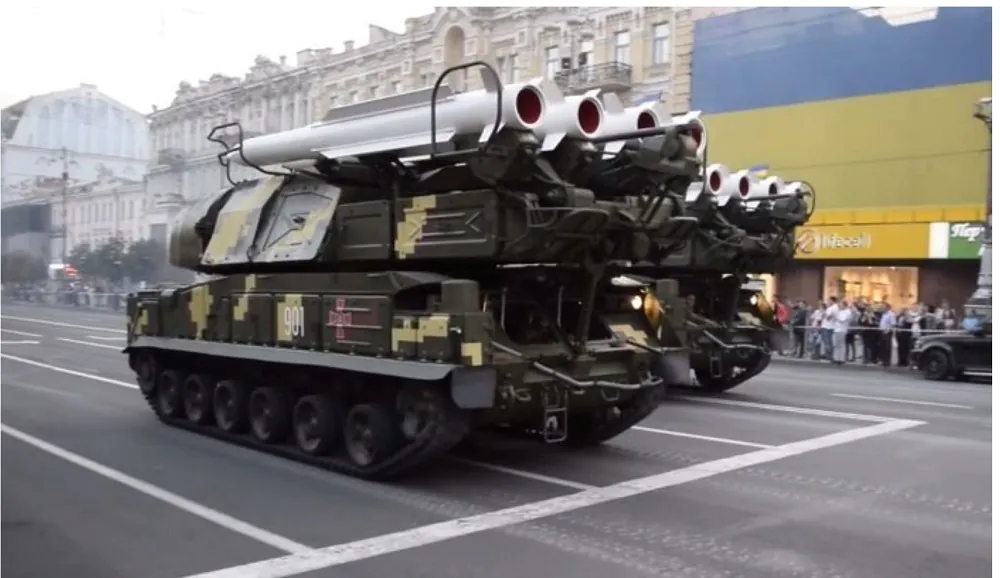
There is a lot of talk that the success of our Armed Forces on earth is enough to defeat the occupiers. But this is not quite true. In modern warfare, air superiority always plays an extremely important role. Thanks to the dominance in the air, the military has the ability to quickly and accurately strike at the enemy, its rear units and infrastructure. Modern war without air support almost nullifies ground successes. This is well understood by the leaders of the Armed Forces, the General Staff and the state.
In this article we will try to tell you about all the pros and cons of our anti-aircraft weapons, think about how and what can protect our skies. Of course, we would really need the help of our Western partners in securing the skies over Ukraine, but for a number of reasons, many of which are unknown to us, or if known, not fully understood, they do not dare to do so. Therefore, we have to take care of it ourselves. But our Armed Forces receive great support from Western partners in the form of armament supplies, including various ground-to-air anti-aircraft missile systems that help protect Ukraine’s skies from enemy aircraft.
So let’s talk more about these weapons, and try to dispel some myths and speculations. So, let’s get started.
Read also: Invasion of Ukraine: Bayraktar TB2 strike UAV review
FIM-92 ‘Stinger’ MPADS
Let’s start with the famous FIM-92 Stinger. These American-made weapons are one of the most widespread air defense systems, which became widely known during the conflict in Afghanistan. But it also proved itself well during the fighting in Ukraine. This MPADS uses infrared surface-to-air missiles and ‘friend-or-foe’ identification system. FIM-92 Stinger has an aiming range of up to 4.8 km and can shoot down air targets at an altitude of up to 3.8 km. Our military received a number of these launchers from Lithuania and Latvia. And even the news that the FIM-92 Stinger is in the service of our air defense forces is already a horror for the orcs.

We talked in detail about the FIM-92 Stinger in a separate article, so if you are interested, you can follow the link below.
Read also: Weapons of Ukrainian victory: FIM-92 Stinger MPADS
‘Starstreak’ MPADS
Friends from the UK have also decided to help us fight enemy helicopters and attack aircraft by providing a powerful Starstreak portable anti-aircraft missile system. This powerful weapon proved to be very successful in combat conditions from day one – with the help of Starstreak MPADS, our military neutralized an enemy Mi-28 helicopter in Luhansk region. This means that the enemy will also be afraid to fly over our territory.
Starstreak is MPADS manufactured by Thales Air Defense from Belfast. The British system provided to our military has a unique missile velocity that exceeds Mach 4.2. This makes them the fastest short-range surface-to-air missiles. For comparison, the speed of the popular Stinger reaches a maximum of Mach 2.2, as you can see, the difference is huge. Of course, this is important in the context of the potential response of target defense systems. The time to employ countermeasures in this case is much shorter, which makes Starstreak an extremely effective weapon.
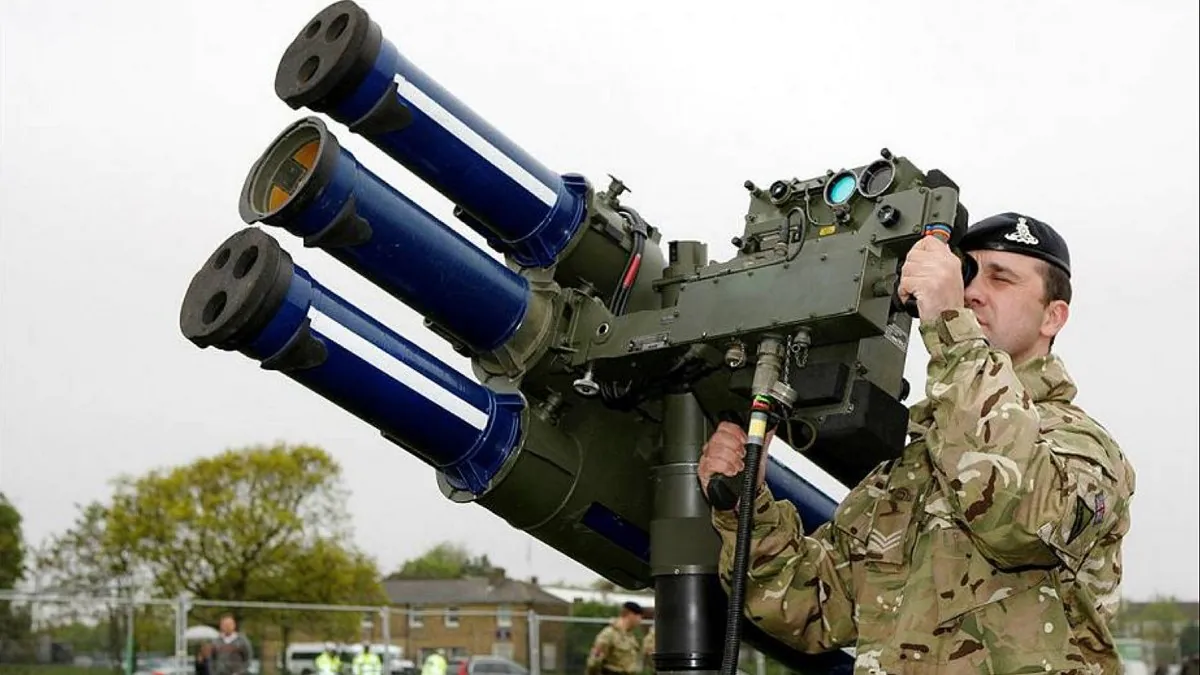
Starstreak also boasts a very smart guidance system. Most MPADS available on the market fire homing missiles aimed at a specific thermal signature. This is the so-called ‘fire-and-forget’ solution. In contrast, Starstreak uses laser beam guidance in accordance with what the operator sees in the optically stabilized sight. The guidance unit projects two very low-intensity beams to the target, invisible to aircraft systems. Based on these data, the sensors calculate the location of the impact point. The use of two beams allows Starstreak missiles to better maneuver and effectively track the target. In addition, the guidance system itself allows you to fire on small objects whose thermal signatures are not enough to be tracked by missiles with thermal homing.
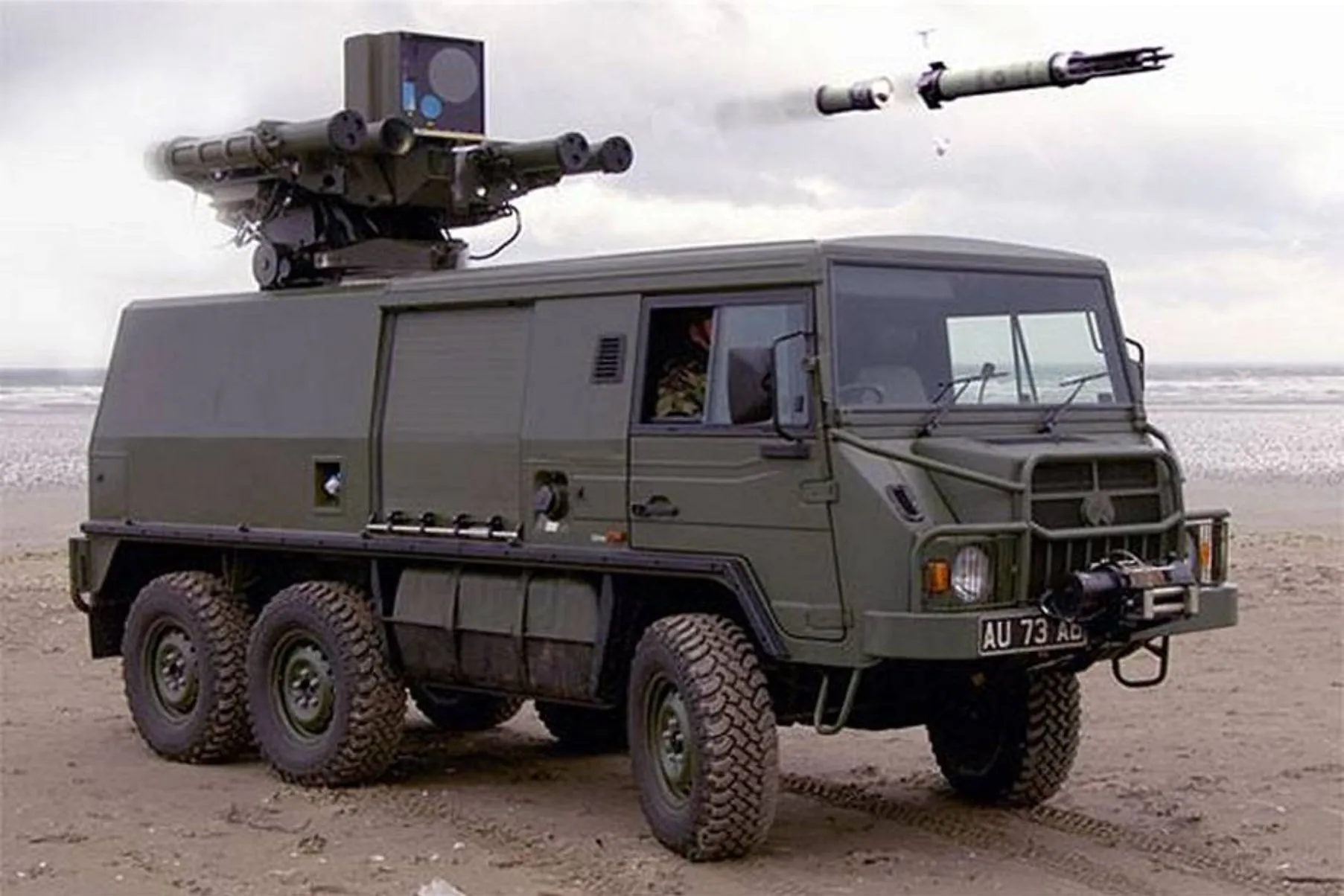
We have a standalone article about this interesting portable anti-aircraft missile system from Great Britain.
Read also: Weapons of Ukrainian Victory: Review of Starstreak MPADS
‘Piorun’ MPADS
Our Polish brothers are also helping us to destroy enemy air targets. Their Piorun anti-aircraft missile system is an upgraded version of the GROM complex, which showed its capabilities during the Georgian-Russian conflict, when nine Russian aircraft were destroyed. Piorun is designed to combat helicopters, aircraft and small targets, such as unmanned aerial vehicles, at altitudes from 10 m to about 4 km and at a distance of 500 m to more than 6 km.
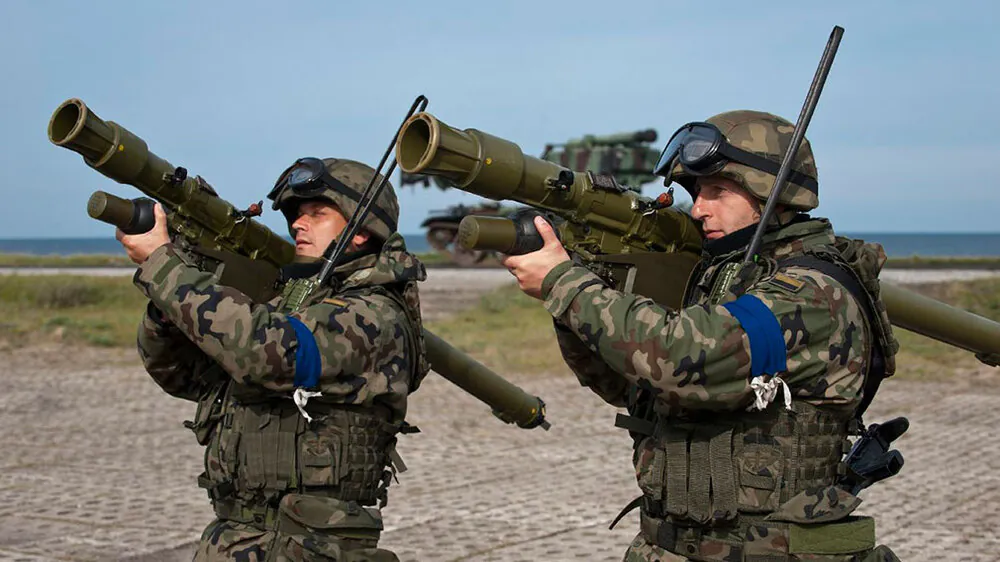
Compared to GROM-1 MPADS, this state-of-the-art weapon has a longer range and better resistance to interference, and is also adapted for nighttime warfare. Piorun MPADS has received an improved sight, doubling the ability to detect the target. Upgraded warheads are automatically aimed at a source of thermal radiation, the engine of a helicopter or aircraft that emits heat. It is almost impossible to escape from this missile system. Polish weapons accurately strike the enemy in the Ukrainian sky.
We also talked about this interesting portable anti-aircraft missile system made in Poland. Our military is very pleased with this state-of-the-art weapon.
Read also: Weapons of Ukrainian victory: The military praise the Piorun MPADS
‘Strela-2’ MPADS
Strela-2 was the first generation of Soviet MPADS. This model was a clone of the American FIM-43 Red Eye system. The Strela-2 shoulder launcher had nothing to do with the previous Strela-1. Strela-2 was officially adopted in 1968. Its western name is SA-7 or the Grail.
This man-portable air defense system (MPADS) was designed to destroy aircraft and helicopters. However, this outdated system cannot be used against modern drones. The ready-to-use system weighs about 15 kg, its maximum range is 4.2 km, in flight the rocket reaches a speed of 500 m/s. If the missile does not hit the target, in 14-17 seconds it self-destructs.
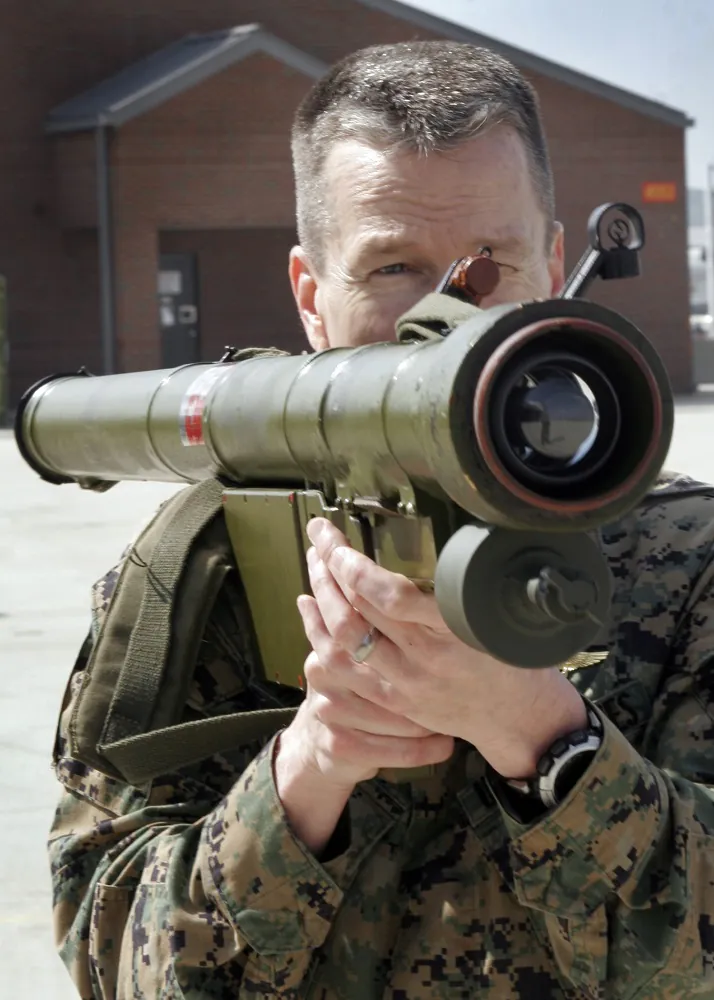
The probability of a missile hitting an unprotected target is only about 10-20%, in addition, the effectiveness is further reduced if the target uses countermeasures such as false flashes and fire deflection missiles, from which Arrow-2 is not protected. Also in some cases, the missile was vulnerable to background interference, solar radiation, clouds and horizon. Therefore, by today’s standards, its effectiveness is very low.
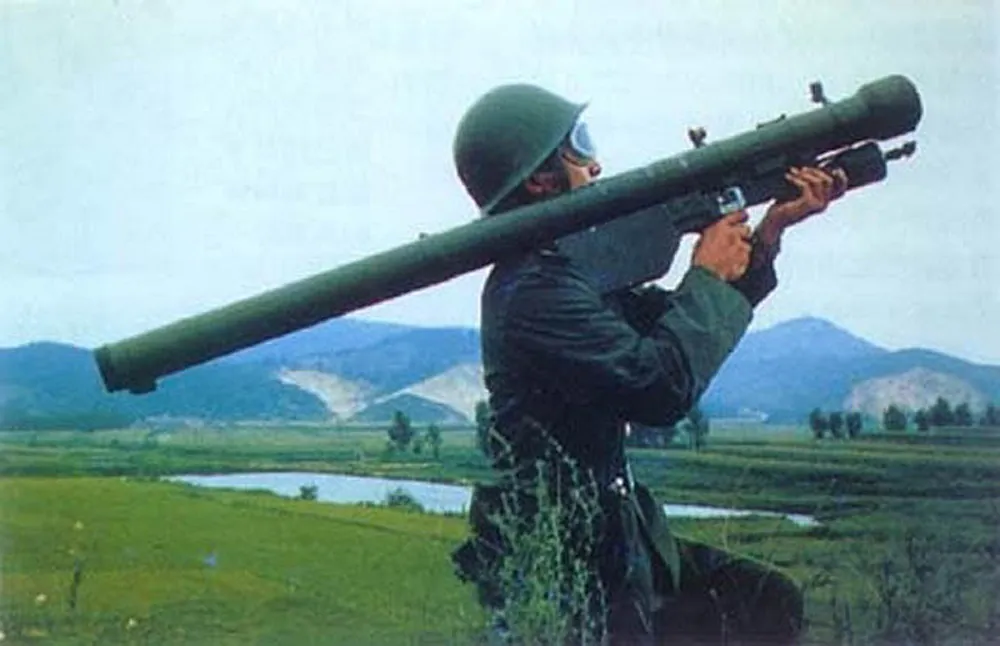
With the advent of modern MPADS, it is almost no longer used by our Armed Forces, but this missile system is still in service. There is also Arrow-3 modification, but it hardly differs from the previous model. These anti-missile systems have been quite effective in the past, but not today.
Read also: Switchblade: American kamikaze drones to protect Ukraine
9K38 ‘Igla’ MPADS
9K38 Igla is a portable launcher anti-aircraft missile system, which is able to hit air targets directly from the shoulder.
This MPADS was developed in the Soviet Union, but is still used by the Ukrainian army. It replaced the older version – Strela-3, and has a better range and sensitivity of the seeker. The system uses a surface-to-air missile.
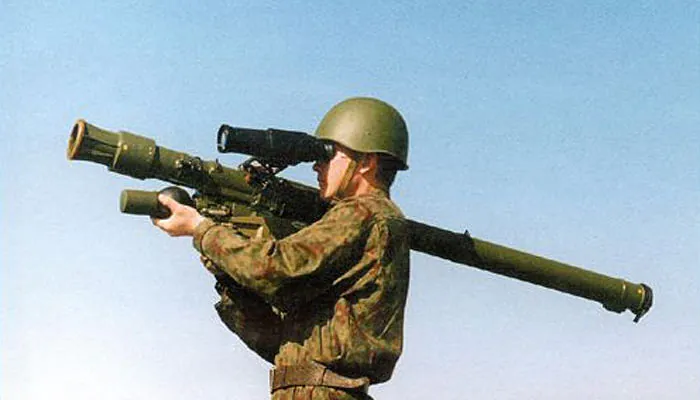 The 9K38 Igla MPADS is designed to fire 72-millimeter infrared-guided missiles equipped with high-explosive warheads only, effective against helicopters and low-flying aircraft, and has an effective target range of 3100 to 5200 m.
The 9K38 Igla MPADS is designed to fire 72-millimeter infrared-guided missiles equipped with high-explosive warheads only, effective against helicopters and low-flying aircraft, and has an effective target range of 3100 to 5200 m.
The functioning of the Igla is similar to other MPAD systems (for example, the American Stinger). The 9M38 surface-to-air missile is inserted into the launch tube. The firing operation involves launching a ground-based power source, powering the target detection unit and the missile. The ‘friend-or-foe’ Identification is carried out before hitting the target using the 1L14 interrogator, mounted on the launcher tube, in addition the MPADS is equipped with a night sight. After aiming, the rocket is launched using the handle. This starts the launch engine, which pushes the 9K38 Igla missile from the launch tube. The warhead determines the heat source when the phase of acceleration begins. Control ribs are used to maneuver the missile to the source of infrared radiation.
Yes, these weapons are not very modern, but still quite effective in combating air targets.
Read also: Weapons of Ukrainian victory: ATGM Javelin FGM-148 – ruthless to enemy tanks
Is MPADS enough to secure the skies over Ukraine?
Here I want to deviate from the topic, and then continue. We often hear that our air defense forces have enough weapons to effectively protect our skies. This is not quite true. As for modern radars and missile technology, the invaders have a significant advantage. Our experts and the military have spoken about this many times, and this can be seen even from the MPADS I listed above. At the beginning of the war, we simply did not have many modern anti-aircraft missile systems, they began to appear in our Armed Forces only in the last two weeks. In addition, it should be noted that Russia’s missile systems are quite modern, the occupiers were preparing for this war, unlike our leaders. It should be understood that the Russian military and space forces significantly outnumber Ukrainian aircraft both in number and in the technologies used in their armaments. Due to this imbalance, from the very beginning of the war, Ukraine urgently appealed to Western partners to provide more modern fighters and air defense equipment.

Some of these air defense systems have already been provided to us, but Stingers or other MPADS do not fully compensate for the lack of appropriate weapons in Ukraine. To combat aircraft and orc cruise missiles, we need medium-range and long-range anti-aircraft missile systems. Portable air defense systems, such as the Stinger, have a limited range (up to 5 km) and functionality, and cannot compensate for the lack of modern fighters and medium-range and long-range missile systems. Kamikaze drones are designed to hit ground targets and also cannot counter Russian planes and missiles.
In the next section, we will talk about anti-aircraft missile systems, which are now in the service of our military.
ZU-23-2 23mm anti-aircraft autocannon
Let’s start with a rather interesting 23-mm anti-aircraft autocannon, ZU-23-2, which our air defense fighters have. Ukraine has more than a thousand towed ZU-23-2 23-mm anti-aircraft autocannons. The weapon can be brought to the firing position in just 30 seconds, it is completely manually operated, and if necessary, can be used against infantry and light armored vehicles. The effective range of this weapon is 2.5 km with a real rate of fire of 400 shots per minute.
Anti-aircraft cannon has a mechanical sight and guidance drives. This severely limits the ability to conduct anti-aircraft fire, but makes weapons as cheap and comprehensive as possible for fighters with low levels of training. There is also no standard anti-aircraft fire control device that issues data for firing at air targets. Therefore, it is possible to conduct only obstructive non-target fire on all types of air targets (except suspended helicopters).
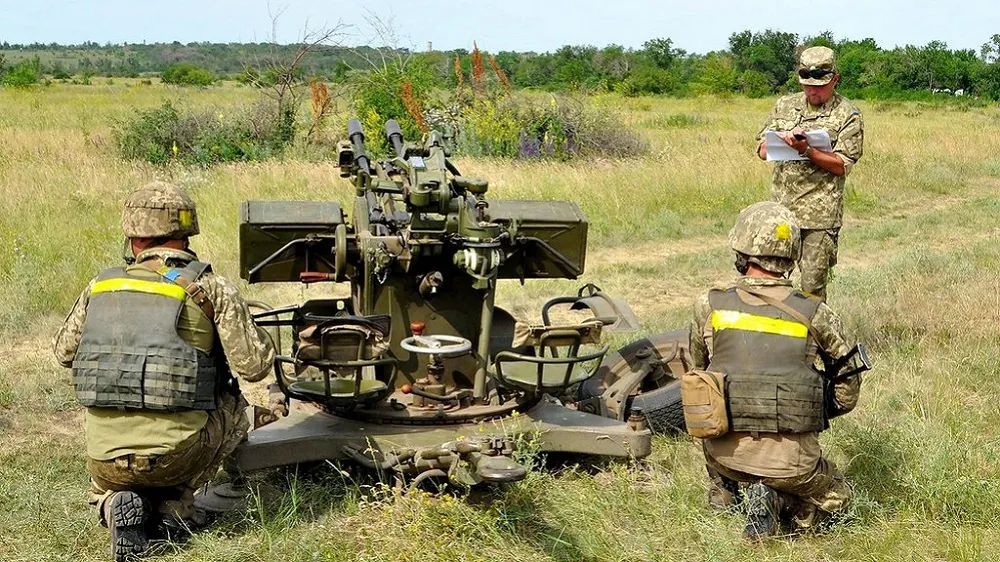
Cannon life is 6000 shots, barrel resource is 3000 shots (provided it is cooling after every 100 shots). Therefore, the ammunition includes two spare barrels for right and left autocannons, which have been adjusted at the factory. The numbers of the installed barrels must match the numbers of the machines. Replacement of worn barrels with barrels from another set is undesirable. The reason is an increase in the mirror gap, the maximum value of which should not exceed 0.6 mm. With an increase in the gap even up to 0.7 mm, transverse annular breaks of ammo sleeves are possible. The main problem is the short-lived chrome plating of the barrel channel.
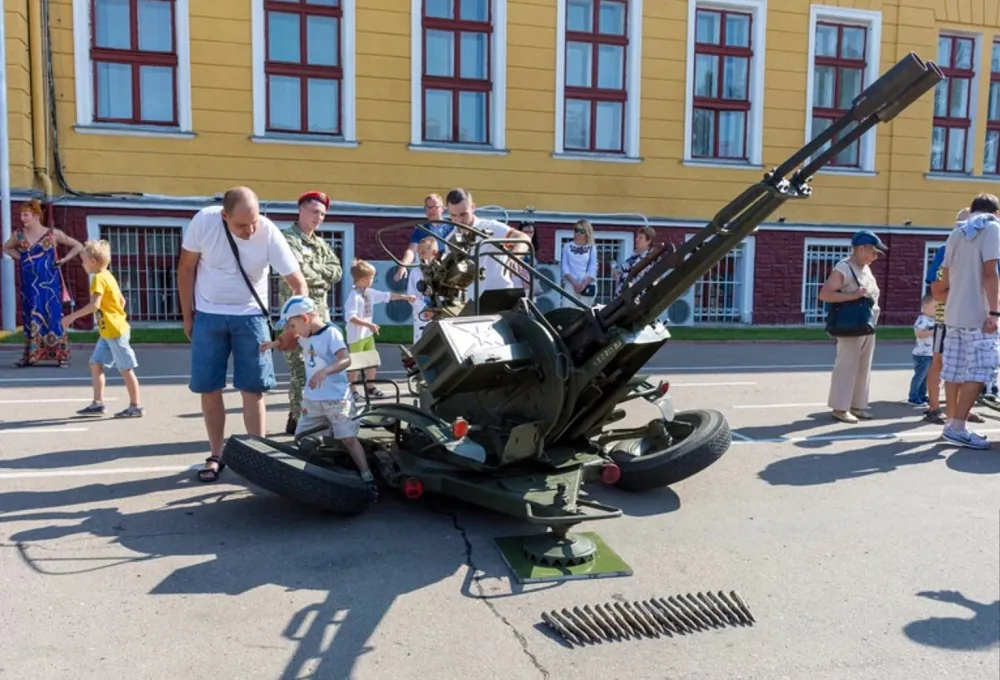
The ZU-23-2 ammunition includes 23-mm cartridges with ammo of only two types. This is a BZT armor-piercing incendiary-tracer projectile (full-body with a hemispherical head and a steel ballistic tip, weighing 190 g, the bottom part contains a substance for tracing, the main body is filled with incendiary substance) and OFZT high-explosive projectiles that weigh 188.5 g and equipped with a main detonator with self-destruct and a maximum operating time of 11 seconds.
ZSU-23-4 ‘Shilka’ lightly armored AA weapon system
‘Shilka’ is a lightly armored self-propelled anti-aircraft system with four paired 23-mm guns. This anti-aircraft system can conduct extremely efficient and accurate fire on enemy helicopters or aircraft in almost any weather conditions and in poor visibility.
Interestingly, every barrel can fire different types of ammunition with a rate of fire of up to a thousand shots per minute, or four thousand per minute when firing from all four guns. ZSU-23-4 ‘Shilka’ is anti-aircraft self-propelled unit designed for direct air defense of ground forces, destruction of air targets flying at speeds up to 450 m/s, at a distance of up to 2500 meters and altitudes up to 1500 meters, as well as ground targets at a distance of up to 2000 meters from stationary position, from a short stop and in motion.
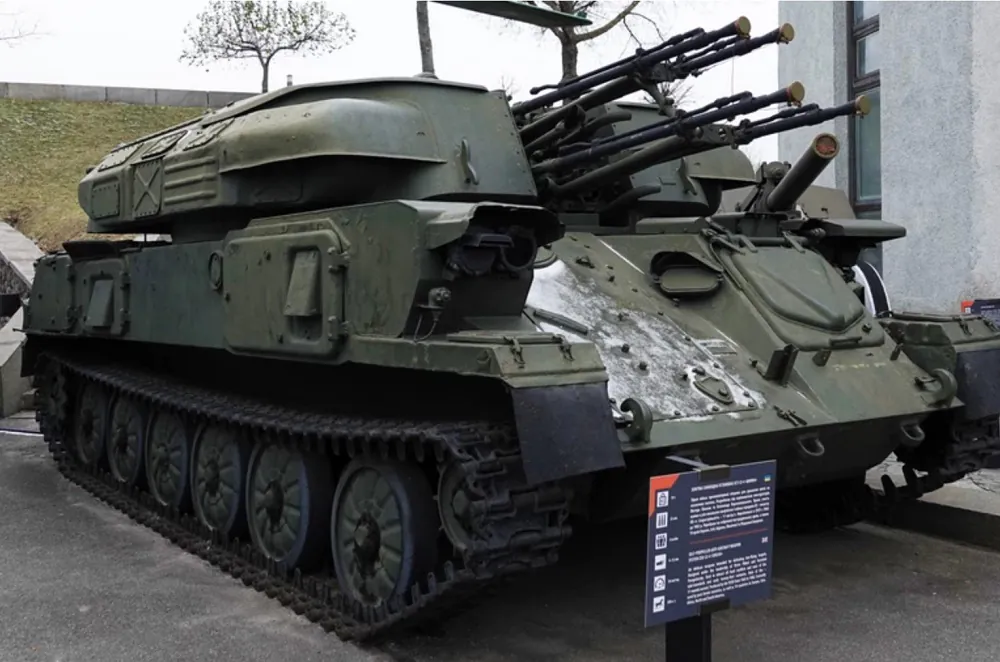
The armament consists of a four-barrel automatic anti-aircraft gun AZP-23-4 with liquid cooling and a radio equipment complex (RPK). The gun is guided by a hydraulic drive, can be used as well in manual mode (ground targets). Ammunition is 2000 shells, rate of fire 3400 shots per minute. The usual setup of the ammo belt is three OFZT high-explosive fragmentation shells and one BZT armor-piercing incendiary-tracing shell.
Read also: Best video games developed in Ukraine
S-300V surface-to-air missile system
Let’s move on to more interesting anti-aircraft missile systems. Among them, many of you have heard of SAM S-300V. This is a long-range anti-aircraft system designed to combat aircraft and cruise missiles. This is a fully automated system (although it can be controlled manually), which when selecting targets connects to the command center, located at a distance of up to 40 km from the launcher. According to experts, this is one of the best air defense systems currently in service.
Western partners also understand this well, so they are trying to transfer these SAMs to Ukraine. They are available in some countries that were members of the Warsaw Pact and received them from the USSR. These include the Baltic States, Poland, Slovakia, Bulgaria, the Czech Republic and Romania.
These systems can be easily adapted to work in Ukraine, do not require additional training of personnel to master them, and, most importantly, they have a huge stockpile of ammunition.
S-300V SAM was developed as a high-level air defense system that provides protection against ballistic missiles, cruise missiles and aircraft. The main role of the S-300V is to protect operational groups and vital industrial and military facilities from massive air attacks. This is exactly what we need now, given the shelling of our peaceful towns and villages.
S-300V SAM is a mobile air defense system, all its elements are mounted on a special chassis.
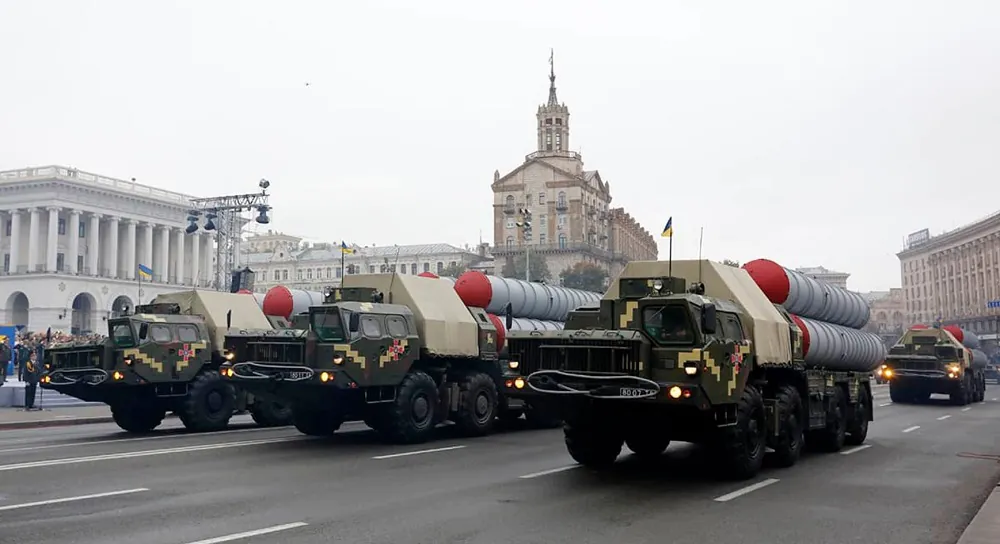
This anti-aircraft missile system uses two different missiles. Both of these missiles are designed to hit air and ballistic targets. The smaller 9M83 missile is used against aircraft, cruise missiles and smaller ballistic missiles. 9M83 missile has a hit chance of 40-65% against a ballistic missile, 50-70% against a cruise missile and 70-90% against enemy aircraft. The larger 9M82 missile is used to hit medium-range ballistic missiles, airborne early warning aircraft at a range of up to 100 km. 9M82 and 9M83 missile warheads contain 150 kg of explosives. It should be noted that the S-300B was considered as a comprehensive protection system against ballistic missiles.
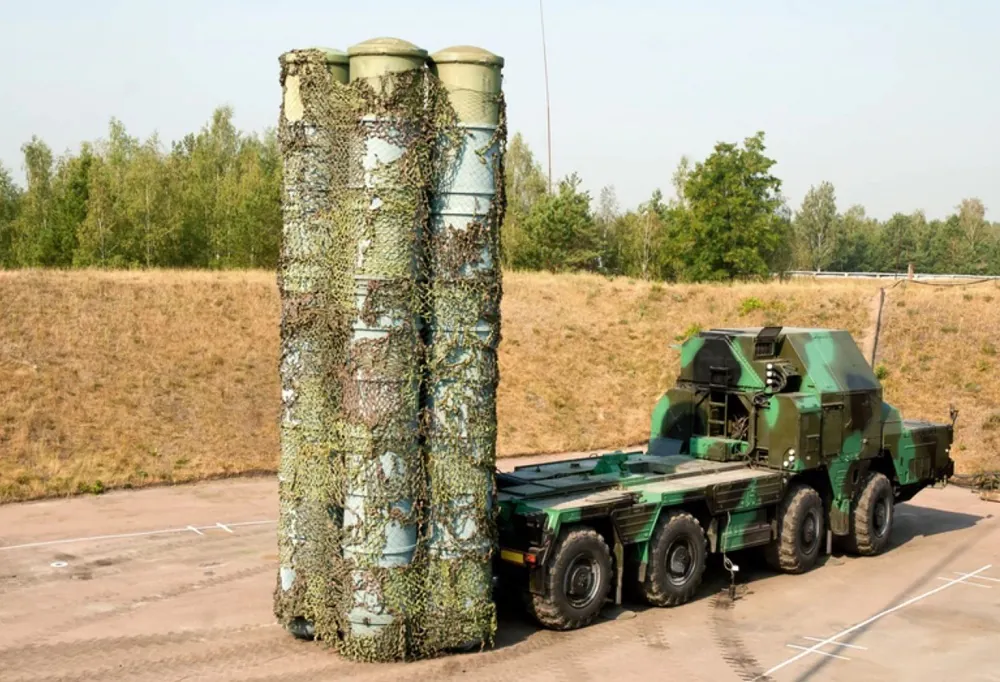
The S-300V battery usually includes a command post machine, a survey radar, a sector surveillance radar and up to 6 chargers/launchers in two versions.
The crew of the launcher consists of 3 people. It carries four smaller 9M82 missiles. The truck is equipped with an intervention radar.
Read also: Best music to come out of Ukraine: Famous rockers, Eurovision darlings, and everything in-between
9К37 ‘Buk-M1’ SAM system
This air defense system can destroy maneuverable aircraft and helicopters flying at low or high altitudes when the enemy uses electronic countermeasures. New versions of Buk can also hit ballistic missiles, cruise missiles, anti-radiation missiles, smart bombs and unmanned aerial vehicles.
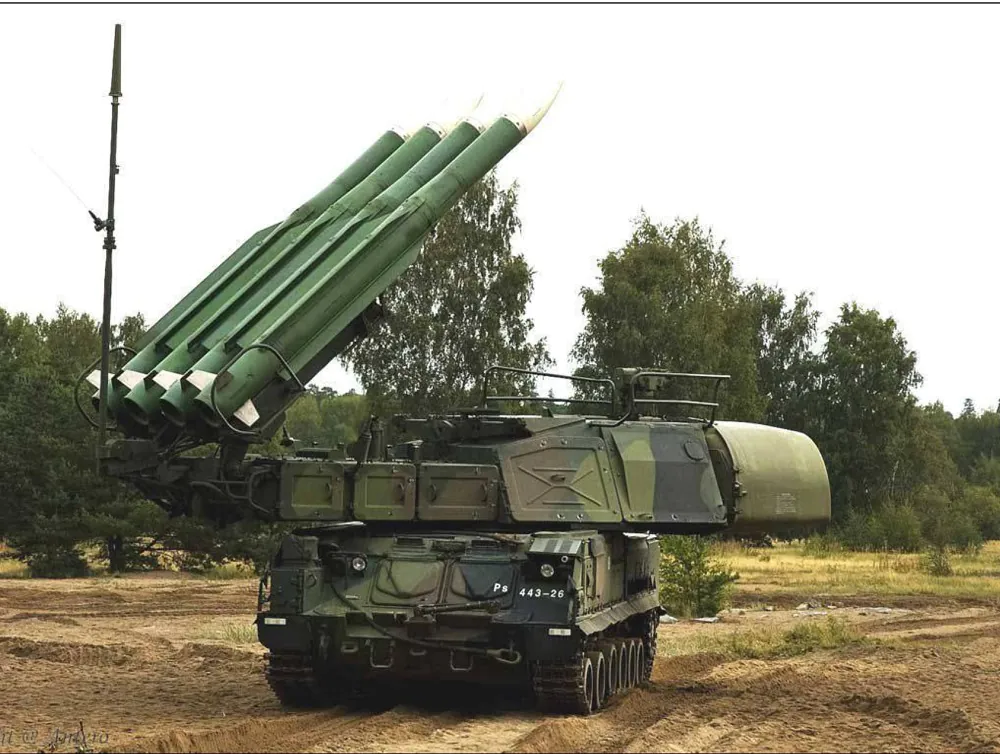
Buk launches 9M38 missiles. It is a single-stage solid-fuel missile. The projectile resembles US Tartarus and Standard air defense missiles. The missile has semi-active radar guidance. It can hit targets at a range of 3.4 to 20.5 km at an altitude over 3 km. The firing range is reduced to 5-15.4 km if the target flies at an altitude of 30 m above the ground. The maximum engaging altitude is 25 km. The missile 9M38 has a hit probability of 70-93%. Buk can also launch older 9M9M3 missiles from Kub-M3 SAM system.
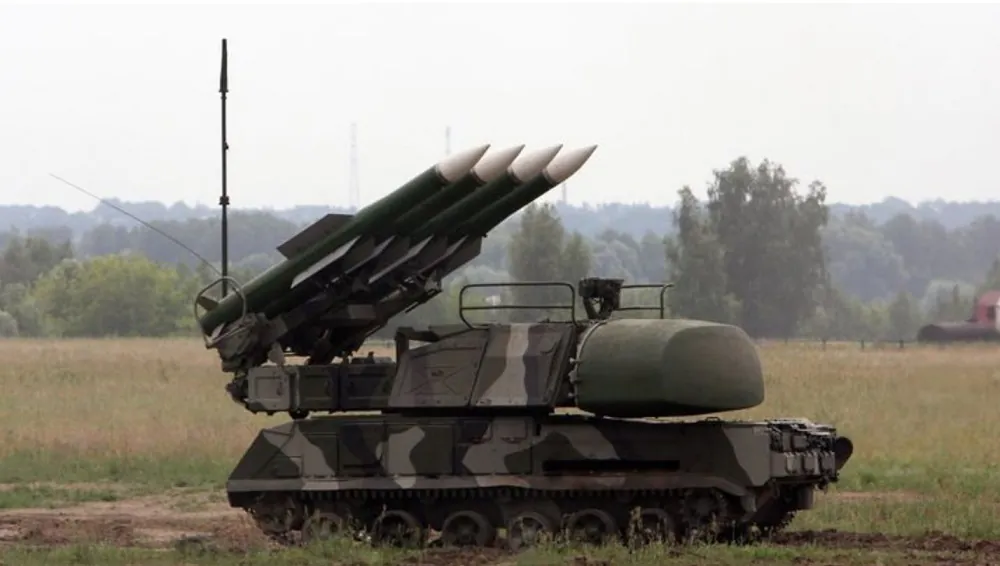
The Buk transporter erector launcher (TELAR) tractor is equipped with a radar, a digital computer, a missile launcher, and a ‘friend-or-foe’ identification system. It is manned by a crew of four and carries four missiles on board.
The radar of Buk TELAR searches for targets, tracks them and directs missiles at them. Therefore, each TELAR vehicle can operate autonomously if required. Radar detects aircraft flying at an altitude of more than 3 km at a range of 65-77 km. The detection range is reduced to 32-41 km when flying at an altitude of 30-100 m above the ground. Low-flying aircraft are detected at a range of 21-35 km.
When TELAR operates autonomously, it takes approximately 24-27 seconds from target detection to missile launch. The missile can be launched approximately 5 minutes after the tractor stops. It also takes about 5 minutes to leave the firing position.
9K33 ‘Osa’ mobile short-range SAM
Osa is a highly mobile short-range missile system, with both the launcher itself and the radar that detects and tracks enemy targets on one vehicle.
Osa was the first serial mobile air defense missile system with radar and missiles on a single vehicle. For the first time, a single vehicle could detect, track and hit aircraft. This system is used against planes and helicopters in any weather.

The initial serial version had four missiles with a maximum range of 10 km and a maximum altitude of 5 km. A later production version of the Osa-AK carried six missiles in containers. The maximum range has been increased to 12 km. Missiles have contact and non-contact fuses. The probability of destruction of the target by the early system is 35-85%, depending on the height. Later serial models have a 55-85% chance of hitting the target. Osa cannot launch missiles on the move. They are launched from a stationary position or during short stops.
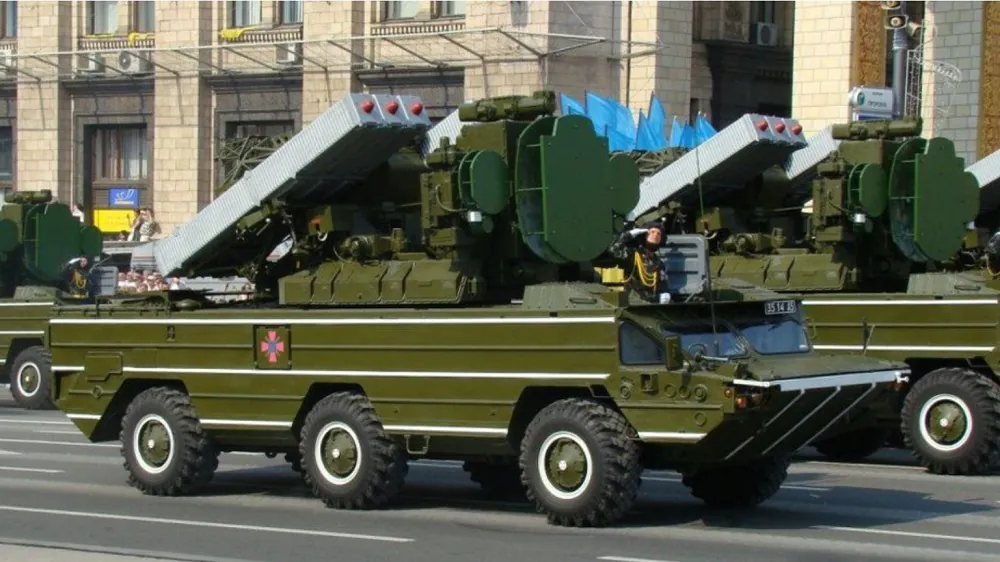
The Osa SAM can also operate independently. Its radar has a range of about 30 km. Some sources claim that this complex detects aircraft at a distance of up to 40 km. The system can search for targets even while driving. Tracking range is about 20 km. On both sides of the radar is a small parabolic antenna to track the missile. Thus, up to two missiles can be aimed at one target at the same time. In addition, both of these missiles are guided at different frequencies to complicate electronic countermeasures. This SAM missile system can also operate with the help of regimental surveillance radars. The response time from target detection to launch is 26 seconds.

The vehicle crew is five people. This car is equipped with NBC protection system. Osa can stop moving and deploy for launch in 4 minutes.
‘Tor’ short range SAM system
Tor is an all-weather short-range missile system for engaging targets at low and medium altitudes.
This system is capable of hitting all kinds of modern air targets. It is used against aircraft, helicopters, UAVs, various types of missiles and high-precision guided munitions. Thor can also detect and intercept anti-radiation missiles. It basically destroys targets that long- and medium-range air defense systems cannot hit.
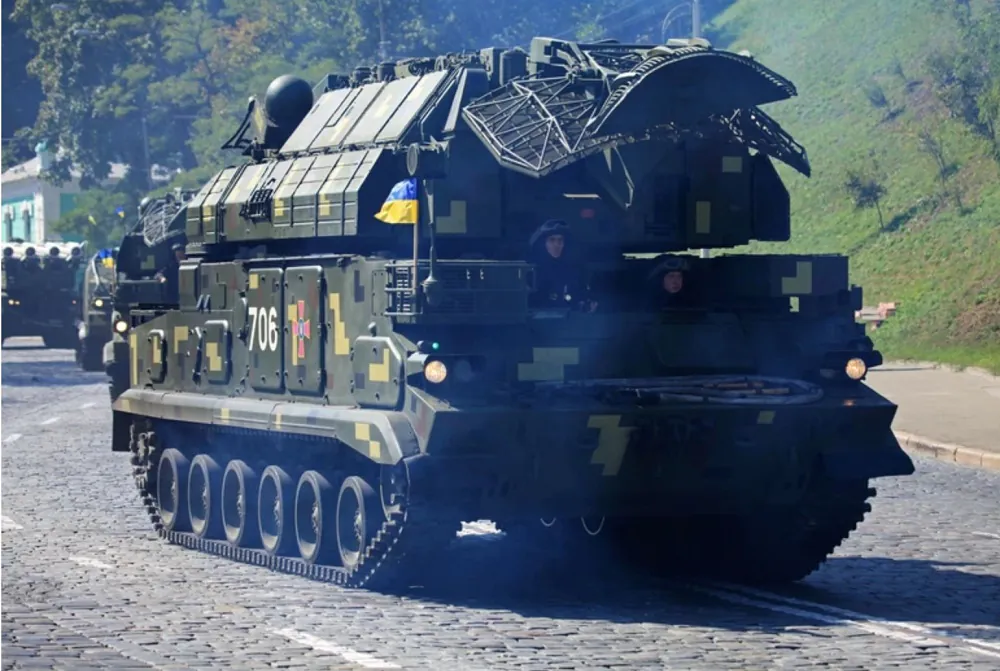
The Tor combat vehicle has radar and missiles based on a single vehicle. The TELAR machine carries 8 missiles. Missiles are launched vertically. The same method of launch is used on the S-300 long-range anti-aircraft missile system, although Thor missiles have a fairly short range.
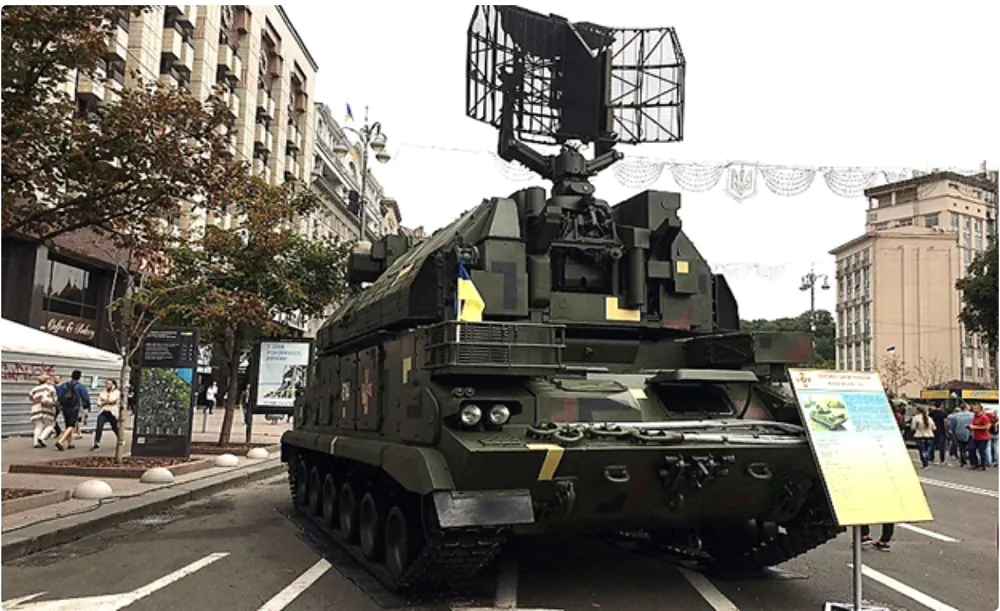
The SAM uses 9M330 missiles. The missiles have radio command guidance. Maximum firing range 5-12 km, maximum altitude 4-6 km, depending on the speed of the target.
The original Tor can hit only one target at a time. The probability of destruction by a missile is 26-75% against aircraft, 50-88% against helicopters and 85-95% against UAVs. This figure depends on the altitude of the target. The higher the target, the more likely it is to be hit.
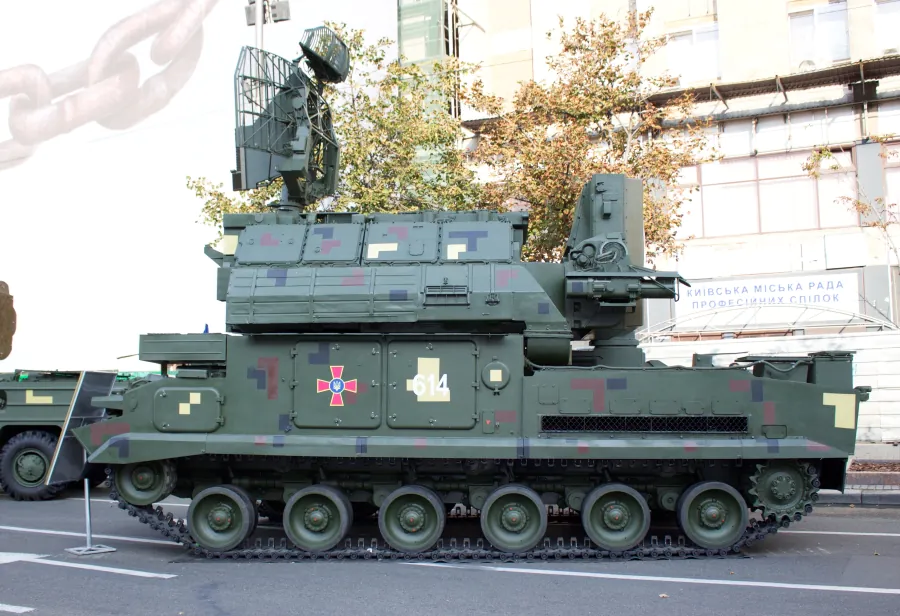
The Radar of Tor detects aircraft at a range of 25-27 km, helicopters at a range of 12 km and UAVs at a range of 9-15 km. Tracking range is around 20 km. The system can search for targets while driving.
9K35 ‘Strela-10’ short range SAM system
9K35 Strela-10 is a self-propelled anti-aircraft missile system with operating range of 5 km and a maximum speed of 65 km/h on the road and 6 km/h on the water. The Strela-10 has an optical and infrared sight and is mainly used to combat low-altitude targets, such as helicopters.
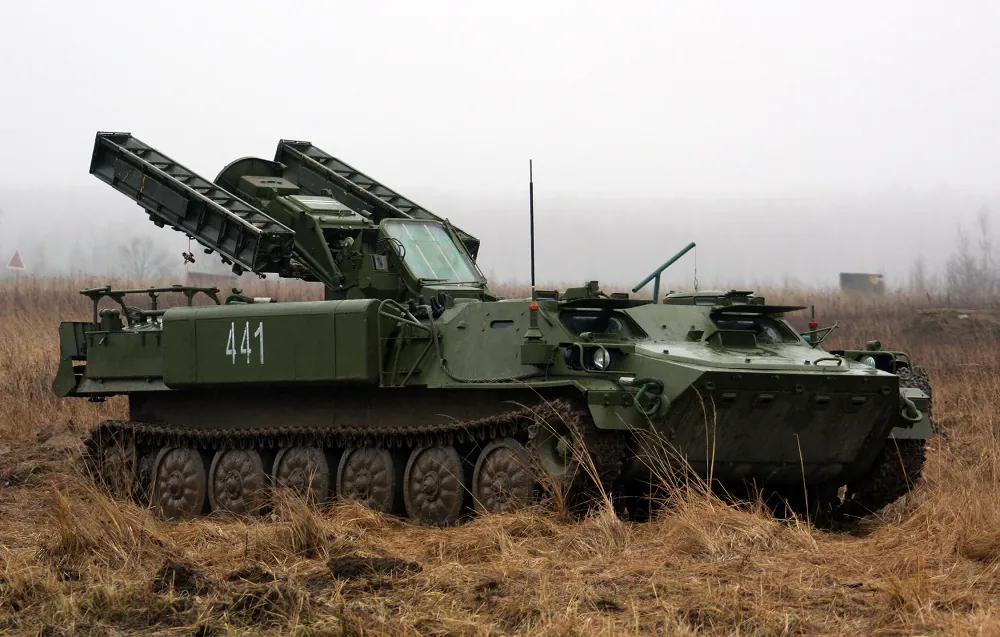
There are 150 units of this type of weapon in Ukraine. Anti-aircraft missile system is quite successful in shooting down enemy air targets.
The missile of Strela-10 has been improved over the Strela-1M. It can now hit faster air targets at greater distances and at higher altitudes. The missile is 2.19 m long. It is slightly longer than the Strela-1M missile, but has the same diameter and wingspan. It weighs 40 kg. High-explosive warhead contains 3 kg of explosives. As we wrote above, the rocket has both optical (photocontrast) and infrared guidance.
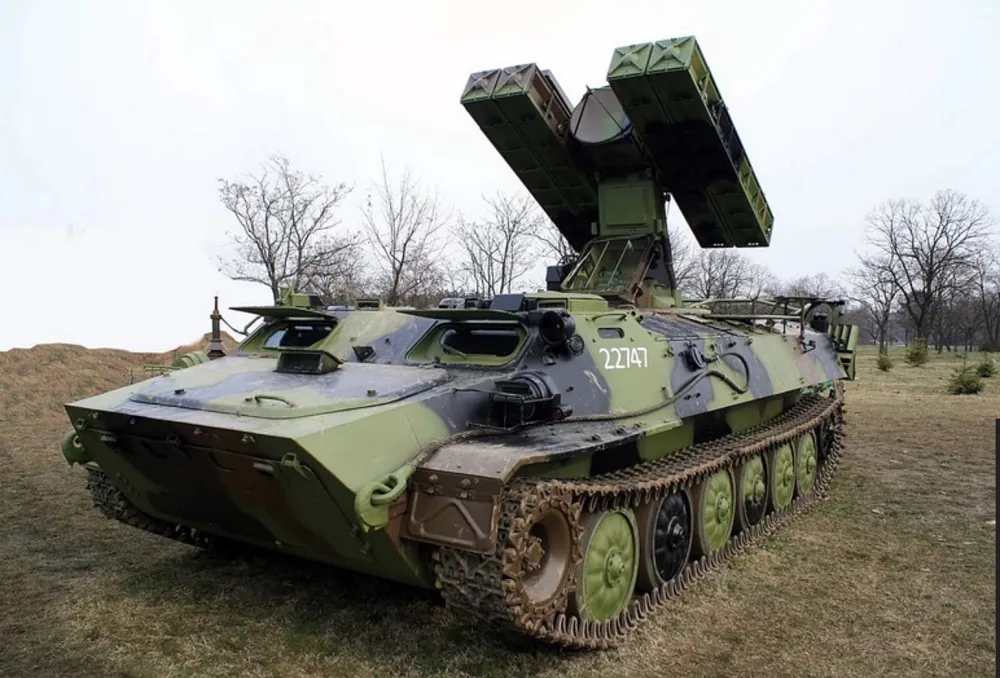
Strela-10 can hit enemy planes and helicopters at a range of up to 5 km and an altitude of up to 3.5 km. The probability of hitting fighters with one missile is 10-50%. The response time of the system is about 6.5 seconds.
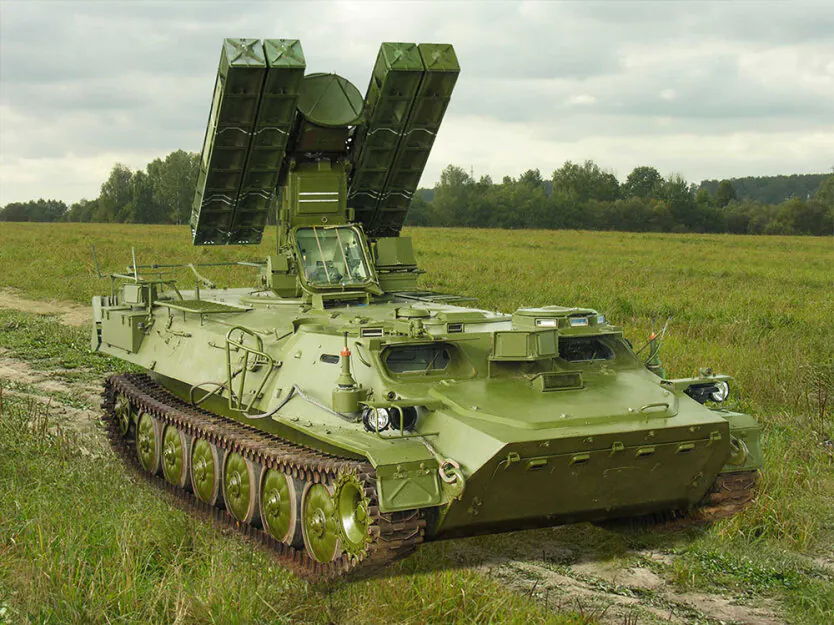
Strela-10 is based on the multi-purpose armored vehicle MT-LB. It is equipped with a diesel engine YaMZ-238V with a turbocharged capacity of 240 hp. The armor of this air defense system protects the crew from small arms fire and fragments of artillery shells. There is a 7.62-mm machine gun for self-defense.
2K22 ‘Tunguska’ self-propelled AA system
This air defense system is used by motorized infantry and mechanized formations. Its main role is to counter the threat posed by Russian attack helicopters and attack aircraft.
2K22 “Tunguska” is equipped with paired 9M311 missiles and 30-mm autocannons. They have a semi-active radar guidance system and a fragmentation warhead. There is a laser non-contact fuse that triggers the warhead when the missile approaches the target. These missiles can hit targets moving at speeds up to 500 m/s. The maximum height is only 3.5 km, and the maximum range is 8 km. 9M311 missiles are effective against low-flying aircraft and helicopters. They have a 65% chance of hitting, while the autocannon’s hit probability is 80%. Similar 9M311K missiles are used by the ‘Kashtan’ Navy SAM. 9M311-1 is an upgraded export version of the missile. Tunguska is capable of firing autocannons on the move, but it must be stationary to fire missiles.
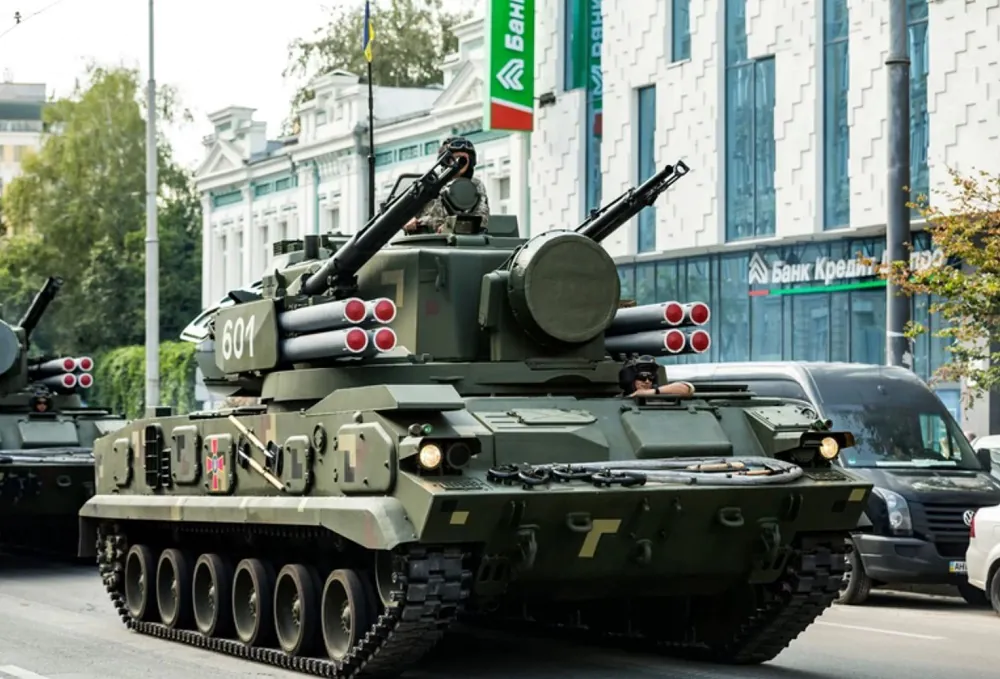
Tunguska usually launches its missiles when the target is at a greater distance, and fires autocannons at targets at shorter distances.
The radar detection range of Tunguska is 17-18 km, and the tracking range is 11-16 km. Aiming is carried out by a gunner who uses an optical sight. System response time is 10 seconds.
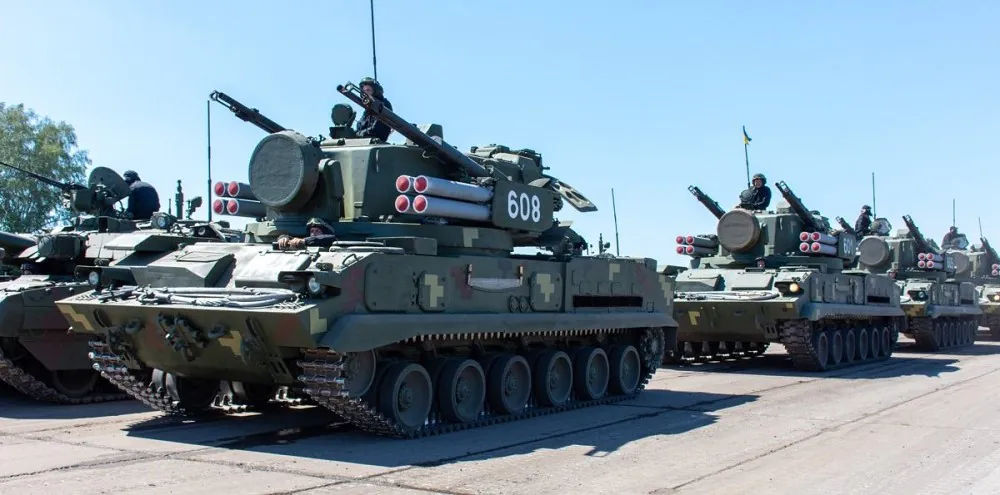
Tunguska armor protects the crew from small arms fire and shrapnel from artillery shells. Although it may not withstand heavy machine gun fire. The vehicle is equipped with automatic fire extinguishing and NBC protection systems.
The Tunguska crew consists of four people – commander, gunner, operator and driver.
Read also: Does Russian intelligence use social networks to find Ukrainian Armed Forces?
We need aircraft and ling range anti-aircraft systems
Yes, we have quite a few anti-aircraft missile systems, but most of them are obsolete weapons left over from Soviet times. We need newer and more modern weapons. It would help us fight the enemy more effectively.
The same S-300 SAM is already quite old, not as powerful as, for example, S-400, which Turkey still refuses to sell. Patriot systems (USA) or cheaper and mobile NASAMS systems (Norway) would be the most effective for protection of Ukrainian airspace. By the way, there are already some agreements about them. However, Ukraine would not give up additional Soviet systems S-300, Buk-M1, which are now also effective in fighting the enemy.
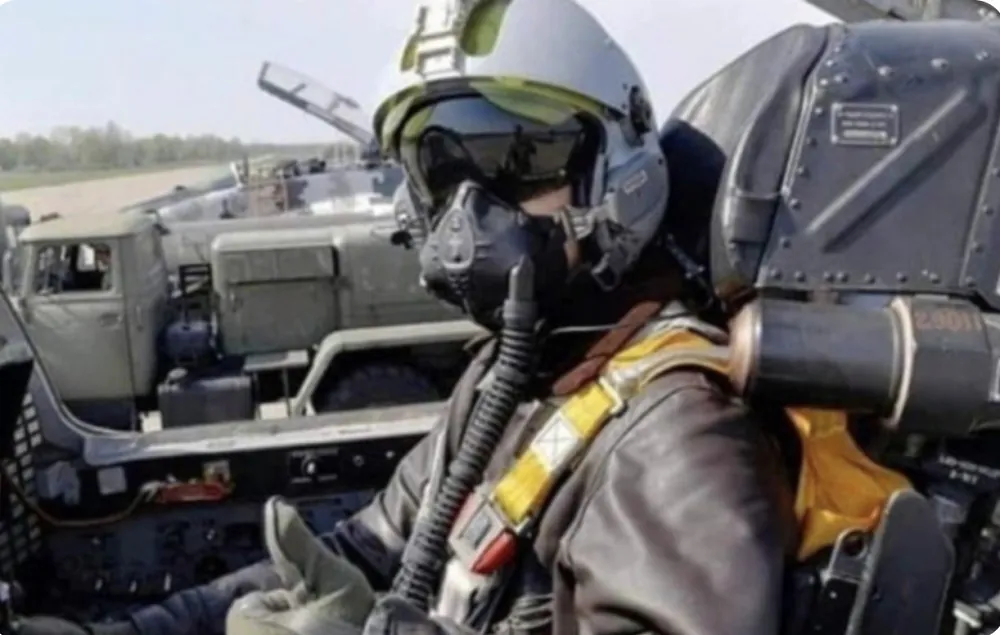
However, in my opinion, first of all, in order to effectively close the Ukrainian sky, our Air Force needs modern planes and helicopters. These could be the F-15, F-16 4+ generation figthers, or other state-of-the-art fighters of this class. I am sure that in 2-3 weeks our pilots could easily master these aircraft and counter the enemy. As far as we know, we are not getting the MiG-29 and Su-27 from our partners, so give us the planes I wrote about above. In addition, unlike Soviet MiG-29s, these fighters are equipped with better technology than those used by the enemy, including modern radars and missiles. Then we would stop constantly asking our Western partners to close the Ukrainian sky, and we would be able to effectively shoot down cruise missiles, destroy enemy aircraft and finally protect our cities and villages from massive shelling. The appearance of such weapons would demoralize the orcs, stop further attacks, because they would understand that we can give a decent rebuff.
I am sure that Victory will be ours! The enemy will retreat! Everything will be Ukraine! Glory to Ukraine!
Read also: Weapons of Ukrainian victory: ATGM Stugna-P – Russian tanks are in trouble
You can also help Ukraine fight with Russian occupants via Savelife or via an official page of the National Bank of Ukraine.

